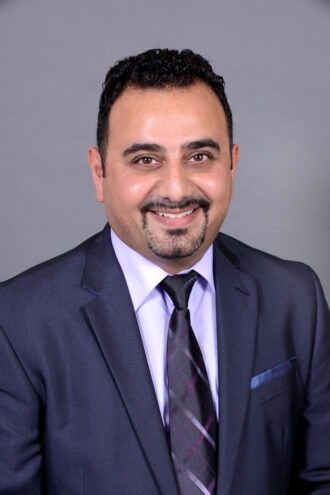It is estimated the world will invest 94 trillion U.S. dollars in infrastructure globally in the next 20 years. With that level of investment, we should ask some important questions. What is the best approach we should use today to deliver these projects? How can we incorporate climate change, social equity, and sustainability into our project planning? What is the future of our engineering practice?
One thing 2020 has taught us—we can’t solve problems as we did before. Today’s infrastructure investment must include new thinking. Through innovation, every project, regardless of sector, needs the longevity to last several decades and incorporate forward-thinking innovations to solve future challenges today. We must start to apply “green box” thinking.

Cities, developers, architects, and engineers are increasingly looking for ways to move away from the “concrete jungle” and incorporate elements of nature into our everyday lives. This focus on more sustainable development is the same approach we should take when evaluating infrastructure.
Many of us are familiar with gray infrastructure—the more traditional, concrete, human-engineered solutions — however, green infrastructure is a solution worth exploring and implementing alongside gray infrastructure. It refers to natural elements of our ecosystem, such as forests, reefs, and wetlands, which can serve many of the same gray infrastructure functions.
When you blend both green and gray infrastructure together, the result is a cohesive solution that helps address community resiliency future challenges. In many instances, incorporating green infrastructure into future infrastructure investments may boost eco-tourism and generate new revenues for local communities.
Green infrastructure can take many forms, from protected natural areas to green roofs in cities. The goal is to employ nature to provide natural benefits such as clean air or reliable flows of clean water. By blending conservation and restoration techniques with innovative engineering, green-gray infrastructure provides solutions enabling communities to mitigate natural disasters and adapt to a changing climate. However, the challenge is strategically combining the two.
To further advance the science and practice of green-gray infrastructure, the Green-Gray Infrastructure Community of Practice (GGI COP) was established. It will blend conservation and restoration of nature with human-made engineering approaches to fortify communities against climate effects.
AECOM co-founded the initiative with Conservation International, a global leader in environmental conservation and sustainable development. Conservation International plans to release a practical guide for GGI implementation, which will be a tool for engagement with local governments, clients, universities, and field staff to support project implementation.
Flooding resiliency is one area where green-gray infrastructure can help provide a solid solution. GGI COP estimates the number of people impacted by floods will double worldwide by 2030. While conventional engineering approaches of upsizing stormwater conveyance and storage systems may have near-future benefits, they do not incorporate future challenges such as climate change and social and economic shifts. These projects can be very costly to construct, and stop-gap solutions only kick the can down the road.
Flooding continues to be a challenge in North Texas, and tackling it head-on requires a new way of thinking. Collaboration and partnerships among many stakeholders in our North Texas community must deliver integrated infrastructure solutions that incorporate green and gray infrastructure together. These solutions should incorporate regional transportation, stormwater management, and environmental planning into regional infrastructure projects.
Now, how do we blend green and gray infrastructure solutions? We do it by adding purpose, beauty, value, equity, and resiliency through each project by transforming the way we perform integrated planning and design.
Integrated planning and design have the power to transform a community into the next level and incorporate restorative environments within urban density. A shift from reactive planning into a proactive planning approach will solve today’s challenges and account for future challenges. This is the future of practice, no doubt.
Rami Issa is the DFW Water Business Line Leader at AECOM.






